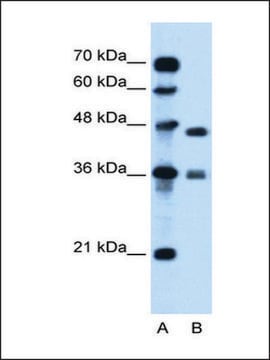추천 제품
Grade
certified reference material
Agency
BCR®
제조업체/상표
JRC
기술
HPLC: suitable
gas chromatography (GC): suitable
형식
neat
저장 온도
2-8°C
SMILES string
c1ccc2c(c1)cc3ccc4cccc5c6ccccc6c2c3c45
InChI
1S/C24H14/c1-2-8-18-16(6-1)14-17-13-12-15-7-5-11-20-19-9-3-4-10-21(19)24(18)23(17)22(15)20/h1-14H
InChI key
JNTHRSHGARDABO-UHFFFAOYSA-N
유사한 제품을 찾으십니까? 방문 제품 비교 안내
분석 메모
For more information please see:
BCR096
BCR096
법적 정보
BCR is a registered trademark of European Commission
신호어
Danger
유해 및 위험 성명서
Hazard Classifications
Carc. 1B - Eye Dam. 1 - Muta. 2
Storage Class Code
6.1C - Combustible acute toxic Cat.3 / toxic compounds or compounds which causing chronic effects
WGK
WGK 3
Flash Point (°F)
Not applicable
Flash Point (°C)
Not applicable
가장 최신 버전 중 하나를 선택하세요:
Kun-Ming Chen et al.
International journal of cancer, 133(6), 1300-1309 (2013-03-14)
We previously reported that dibenzo[a,l]pyrene (DB[a,l]P), the most potent known environmental carcinogen among polycyclic aromatic hydrocarbons (PAH) congeners, is carcinogenic in the oral tissues of mice. We have now developed a new mouse model which employs the oral application of
George S Bailey et al.
Chemical research in toxicology, 22(7), 1264-1276 (2009-05-20)
Assessment of human cancer risk from animal carcinogen studies is severely limited by inadequate experimental data at environmentally relevant exposures and by procedures requiring modeled extrapolations many orders of magnitude below observable data. We used rainbow trout, an animal model
Susan Ritger Crowell et al.
Toxicology and applied pharmacology, 257(3), 365-376 (2011-10-18)
Polycyclic aromatic hydrocarbons (PAHs) are ubiquitous environmental contaminants generated as byproducts of natural and anthropogenic combustion processes. Despite significant public health concern, physiologically based pharmacokinetic (PBPK) modeling efforts for PAHs have so far been limited to naphthalene, plus simpler PK
Lisbeth K Siddens et al.
Toxicology and applied pharmacology, 264(3), 377-386 (2012-09-01)
The polycyclic aromatic hydrocarbon (PAH), benzo[a]pyrene (BaP), was compared to dibenzo[def,p]chrysene (DBC) and combinations of three environmental PAH mixtures (coal tar, diesel particulate and cigarette smoke condensate) using a two stage, FVB/N mouse skin tumor model. DBC (4nmol) was most
David J Castro et al.
Carcinogenesis, 30(2), 315-320 (2008-12-17)
The carcinogenic potential of dibenzo[a,l]pyrene (DBP) has been well characterized in numerous animal models. We have previously documented that a single dose of 15 mg/Kg DBP to pregnant mice late in gestation (GD 17) produces an aggressive T-cell lymphoma as
문서
This application note describes the fast and efficient separation of the EU’s list of 15 + 1 polynuclear aromatic hydrocarbons (PAHs) using Ascentis® Express PAH HPLC column.
자사의 과학자팀은 생명 과학, 재료 과학, 화학 합성, 크로마토그래피, 분석 및 기타 많은 영역을 포함한 모든 과학 분야에 경험이 있습니다..
고객지원팀으로 연락바랍니다.![Dibenzo[a,h]pyrene BCR®, certified reference material](/deepweb/assets/sigmaaldrich/product/structures/246/746/f3144b1e-aff5-4c36-8701-769da2ffe8c0/640/f3144b1e-aff5-4c36-8701-769da2ffe8c0.png)
![Dibenzo[a,e]pyrene BCR®, certified reference material](/deepweb/assets/sigmaaldrich/product/structures/276/556/dd214831-9057-438a-b33d-aa10f7b4e48c/640/dd214831-9057-438a-b33d-aa10f7b4e48c.png)
![Dibenzo[a,l]pyrene vial of 25 mg, Cerilliant®](/deepweb/assets/sigmaaldrich/product/structures/937/930/3e2321b0-d54a-46c2-bb84-007bb57eb381/640/3e2321b0-d54a-46c2-bb84-007bb57eb381.png)





![Benzo[b]fluoranthene 98%](/deepweb/assets/sigmaaldrich/product/structures/175/744/6fa5fca2-b6ec-47b6-ab7a-fe895843f226/640/6fa5fca2-b6ec-47b6-ab7a-fe895843f226.png)


